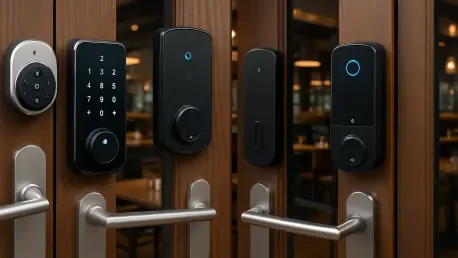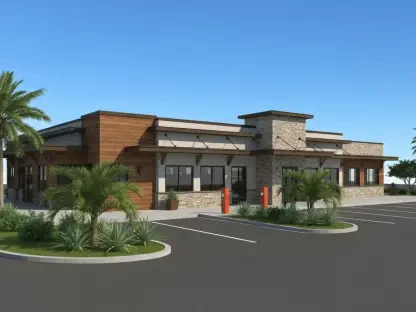Welcome to an insightful conversation with Katarina Railko, our esteemed hospitality expert with a deep background in travel, tourism, and the entertainment sector. Katarina has a wealth of experience in navigating the unique challenges of the hospitality industry, often speaking at expos and conferences about innovative solutions. Today, she joins us to dive into the transformative world of smart lock technology, specifically tailored for restaurants. We’ll explore how these cutting-edge systems enhance security, streamline operations, and simplify access management in the fast-paced food service environment, offering practical insights for restaurateurs looking to modernize their businesses.
How did the concept of smart locks for restaurants come about, and what unique challenges in the hospitality industry do they aim to address?
The idea of smart locks for restaurants emerged from recognizing the chaos and security gaps in such a dynamic industry. Restaurants deal with high staff turnover, multiple access points, and constant vendor interactions, all while maintaining strict safety and compliance standards. Traditional locks and keys just couldn’t keep up—keys get lost, duplicated, or not returned. Smart locks were designed to tackle these pain points by offering digital control over who enters where and when, reducing risks like theft or unauthorized access. They also save time for managers who juggle a million tasks daily, giving them a tool to oversee operations without being physically present.
Can you walk us through how smart locks provide restaurant owners with control over various areas of their establishment?
Absolutely. Smart locks allow restaurant owners to manage every door—whether it’s the front entrance, kitchen, storage rooms, or offices. They can set specific access permissions based on roles or schedules. For instance, a line cook might only access the kitchen during their shift, while a manager has broader access. Everything is controlled through a digital platform, so changes can be made instantly, even remotely. This means if a delivery driver needs access to a back door at 3 p.m., you can grant it without handing out a physical key or being onsite.
What are some of the standout security features that smart locks bring to restaurants, and how do they impact daily operations?
One of the biggest security perks is the detailed logging of every entry and exit. This isn’t just about knowing who came in—it helps with things like ensuring food safety protocols are followed or verifying labor hours for compliance. Another feature is temporary access codes for deliveries or maintenance, which expire after use, so there’s no worry about lingering access. These features reduce vulnerabilities like theft or tampering, especially in sensitive areas like alcohol storage, and give owners peace of mind that their business is protected around the clock.
How do smart locks simplify staff management, especially with the high turnover often seen in the restaurant industry?
High turnover is a real challenge, and smart locks make onboarding and offboarding staff incredibly smooth. Adding a new employee to the system takes just a few clicks—you assign their access level based on their role, and they’re ready to go. If someone leaves, you can revoke their access instantly, no need to change locks or hunt down keys. This speed is crucial not just for efficiency but for security, ensuring former employees can’t re-enter restricted areas. It cuts down on administrative headaches and lets managers focus on running the restaurant.
In what ways do smart locks improve coordination with vendors and delivery personnel for a busy restaurant?
Vendors and deliveries can disrupt a restaurant’s flow, especially during peak hours. Smart locks solve this by allowing scheduled access—say, a supplier gets a time window to drop off goods without interrupting service. Managers set this up in advance, and access tracking ensures there’s a record of who came in and when. This accountability is key for resolving disputes or ensuring deliveries happen as planned. It minimizes chaos, keeps operations running smoothly, and lets staff focus on customers instead of door duty.
What considerations go into designing smart lock hardware for the high-traffic, demanding environment of a restaurant?
Restaurants are tough on equipment—doors are constantly in use, and the environment can be messy with grease, heat, or spills. Smart lock hardware is built to withstand that wear and tear, with durable materials that don’t break down under heavy use. At the same time, the design often prioritizes aesthetics since these locks are visible in customer-facing areas. They’re made to blend into a restaurant’s vibe while being functional, with features like weather resistance for outdoor access points. Reliability is non-negotiable in such a fast-paced setting.
How accessible is the software behind smart locks for restaurant managers who might not be very tech-savvy?
The software is designed with simplicity in mind because restaurant managers don’t have time to wrestle with complicated tech. Most systems have intuitive interfaces, often accessible via a smartphone or tablet, where you can manage access, view logs, or make changes on the go. Remote management means you can handle everything from anywhere with an internet connection. Plus, there’s usually robust support—think tutorials, helplines, or even onsite training—to ensure everyone gets up to speed quickly, no tech expertise required.
Can you share an example of how the audit trail feature of smart locks has made a difference for a restaurant’s operations?
Audit trails are a game-changer for accountability. I recall a case where a restaurant noticed inventory discrepancies in their storage room. Using the audit trail, they could see exactly who accessed the area during the suspected time frame. It turned out to be an oversight by a new staff member who logged an item incorrectly, not theft. Without that log, it could’ve led to mistrust or wasted time investigating. The feature provided clarity, helped resolve the issue fast, and reinforced proper procedures with the team.
How do smart locks integrate with other tools or systems that restaurants typically rely on for their operations?
Integration is a huge strength of modern smart lock systems. They often connect seamlessly with point-of-sale systems, scheduling software, or vendor management tools, creating a cohesive operational ecosystem. For example, linking with a scheduling tool can automatically adjust access based on shift assignments. Some platforms even offer open APIs, allowing restaurants to customize integrations with their unique setups. This connectivity reduces manual work and ensures that security aligns with other aspects of the business, making everything more efficient.
What is your forecast for the future of smart lock technology in the hospitality industry?
I believe smart lock technology will become a standard in hospitality, not just a luxury. We’re already seeing advancements like biometric access or AI-driven security alerts that predict potential breaches before they happen. Integration will deepen, connecting smart locks with broader smart building systems for energy management or customer flow analytics. I also expect more focus on user experience—simpler interfaces and faster setups—to cater to smaller establishments. Ultimately, as cyber threats grow, security features will evolve to stay ahead, ensuring restaurants remain safe and efficient in an increasingly digital world.









